What is a cargo bike? Everything you need to know
Cargo bikes are rising in popularity amongst city dwellers and young families, and for good reason. We take a closer look at what exactly cargo bikes are and why they might be the perfect next bike for you
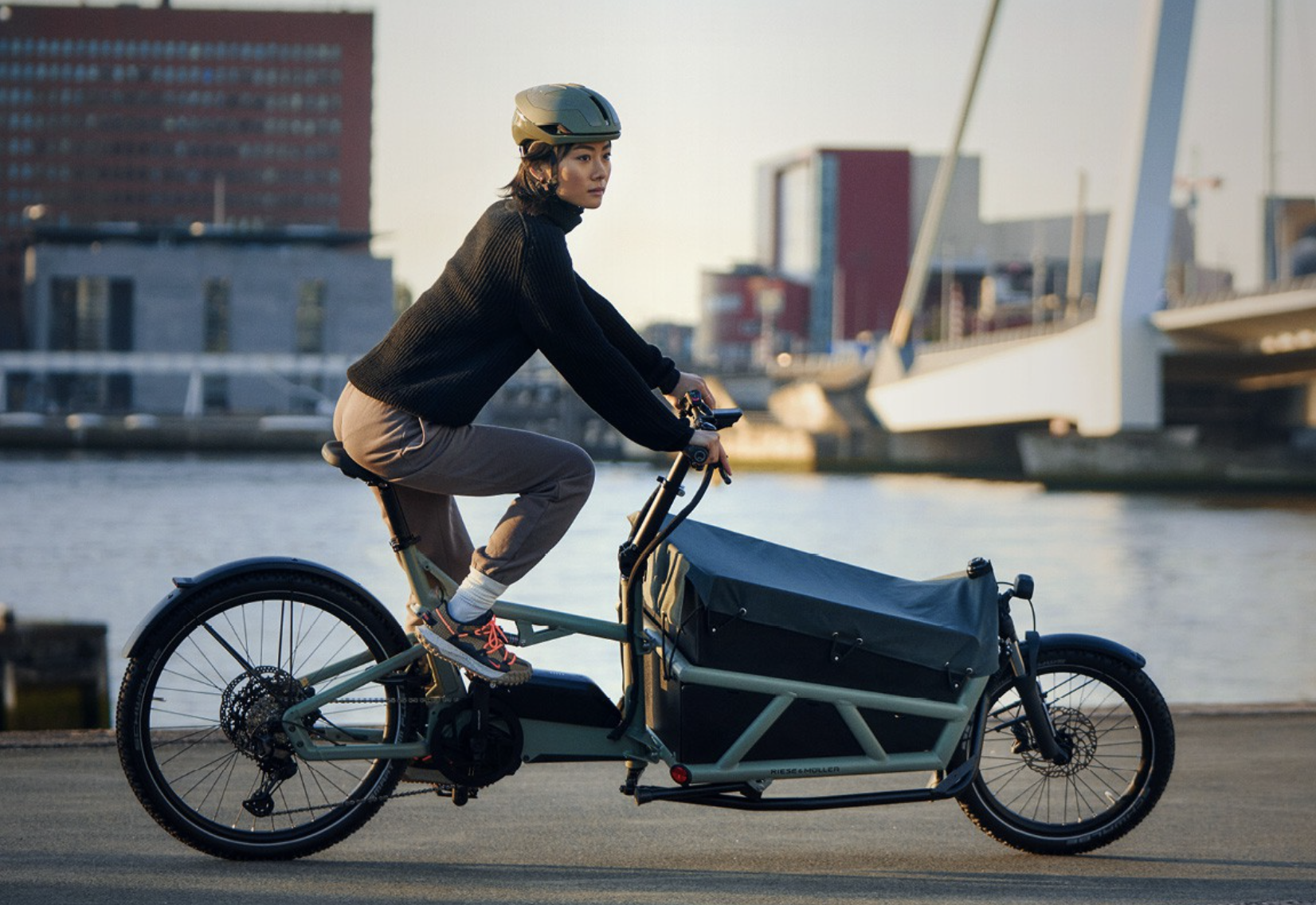
In recent years, the sight of a cargo bike gliding its way down a city cycle lane has become increasingly familiar, and for good reason. Usually laden with a myriad of children, boxes, pets, cargo bikes are incredibly hardworking, practical, and versatile bikes with the potential to revolutionise transport.
At its simplest, a cargo bike is a bicycle that allows you to carry cargo (or heavy loads) easily: this might be children or pets, your weekly shopping, furniture, your weekly veg box delivery, or anything else. Cargo bikes generally feature a longer wheelbase than a traditional bike, a sturdy frame and either a box or flatbed with rear or front-loading capacity.
With the rising popularity of electric bikes in recent years, electric-assist cargo bikes have become popularly adopted; cargo bikes have, in some instances, the ability to carry up to 250kg and so the additional help from a motor to tackle inclines when fully loaded is a welcome addition.
Cargo bikes are not a new phenomenon, they’ve been around since the late 1880s, and might be recognisable as the ‘butcher bikes’ once spotted dropping deliveries in small rural areas and have been used pretty consistently as part of postal fleets. However, with the recent rise in fuel costs and the increase in concern around air pollution, more people are turning to cargo bikes as an alternative (and more environmentally friendly) mode of transport – particularly for those in cities where access to a car might be uneconomical and a traditional bike too limiting for everyday activities. You don’t need a license to ride a cargo bike, and provided the top speed is under 15mph (25kw/h), electric cargo bikes are legal on British roads, making them particularly accessible for those without a driving license.
Brands such as Tern, Riese & Müller and Babboe are well-regarded for building high-quality and durable cargo bikes, while manufacturers such as Dahon are starting to venture into the cargo bike space with innovations such as their foldable cargo bike. Meanwhile, if you're looking to carry children, a bike trailer for kids is a good alternative.
What types of cargo bikes are there?
When we’re talking about a cargo bike, we’re typically speaking about mini cargo bikes, box-bikes, longtails or, perhaps less commonly, pedicabs. You may also recognise tricycles, which are often used in commercial settings (think ice cream bicycles!).
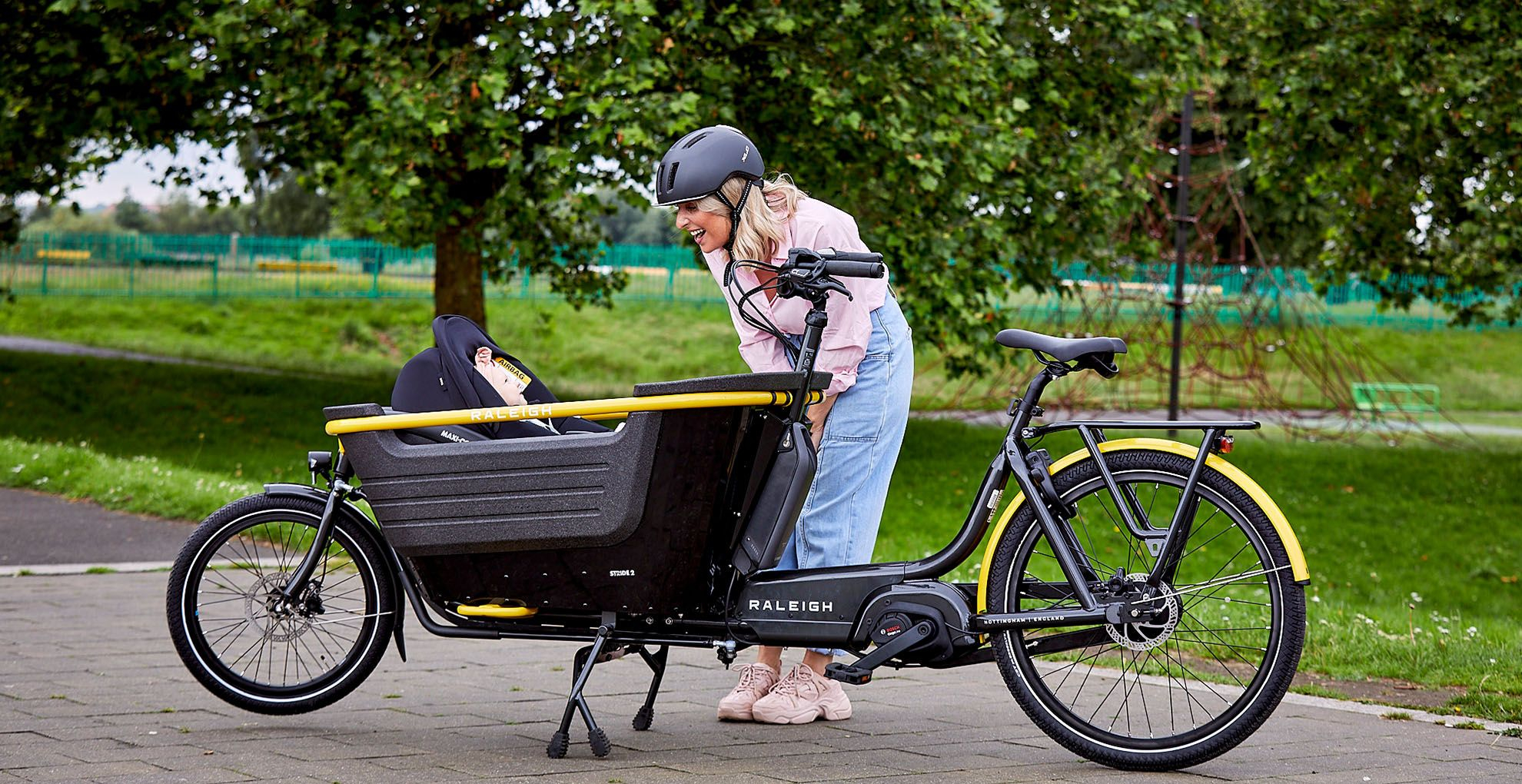
A box-bike (also known as a Long-John or Bakfiet), for instance, generally resembles a two-wheeled wheelbarrow with front loading capacity and is great for transporting bulkier items, lots of children, pets, or items you might want to keep an eye on whilst riding. They feature a box on a flatbed at the front of the bike and are driven using steering linkage which, without getting too technical, means that the handlebars do not directly control the front wheel. When fully loaded, a box-bike offers a slightly different style of riding to traditional bikes which might be initially daunting, however, their popularity on roads indicates that with a bit of practice, riders quickly become proficient.
Get The Leadout Newsletter
The latest race content, interviews, features, reviews and expert buying guides, direct to your inbox!
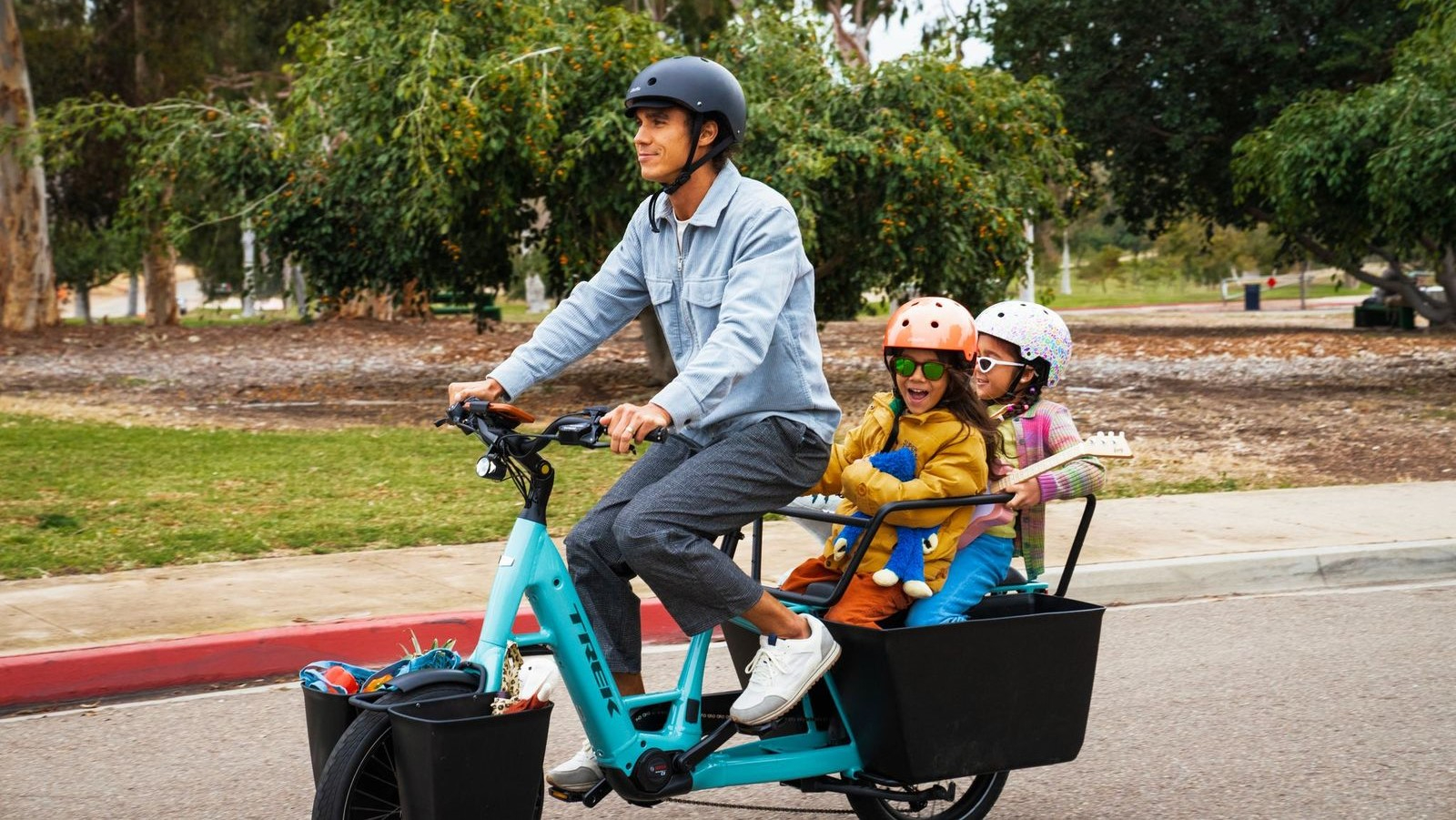
Longtail cargo bikes, conversely, generally load from the rear on a flatbed, and while they can carry a similar load to a box-bike, they have the benefit of being slightly lighter and easier to ride due to their similarity to traditional bicycles. The frame is extended to offer storage behind the rider and can be adapted easily to whatever cargo you are transporting. Children are often strapped into a cage at the back; however, unlike the box-bike which is a bit more ‘load-and-go’, you’ll likely need to invest in more accessories to keep your cargo in place.
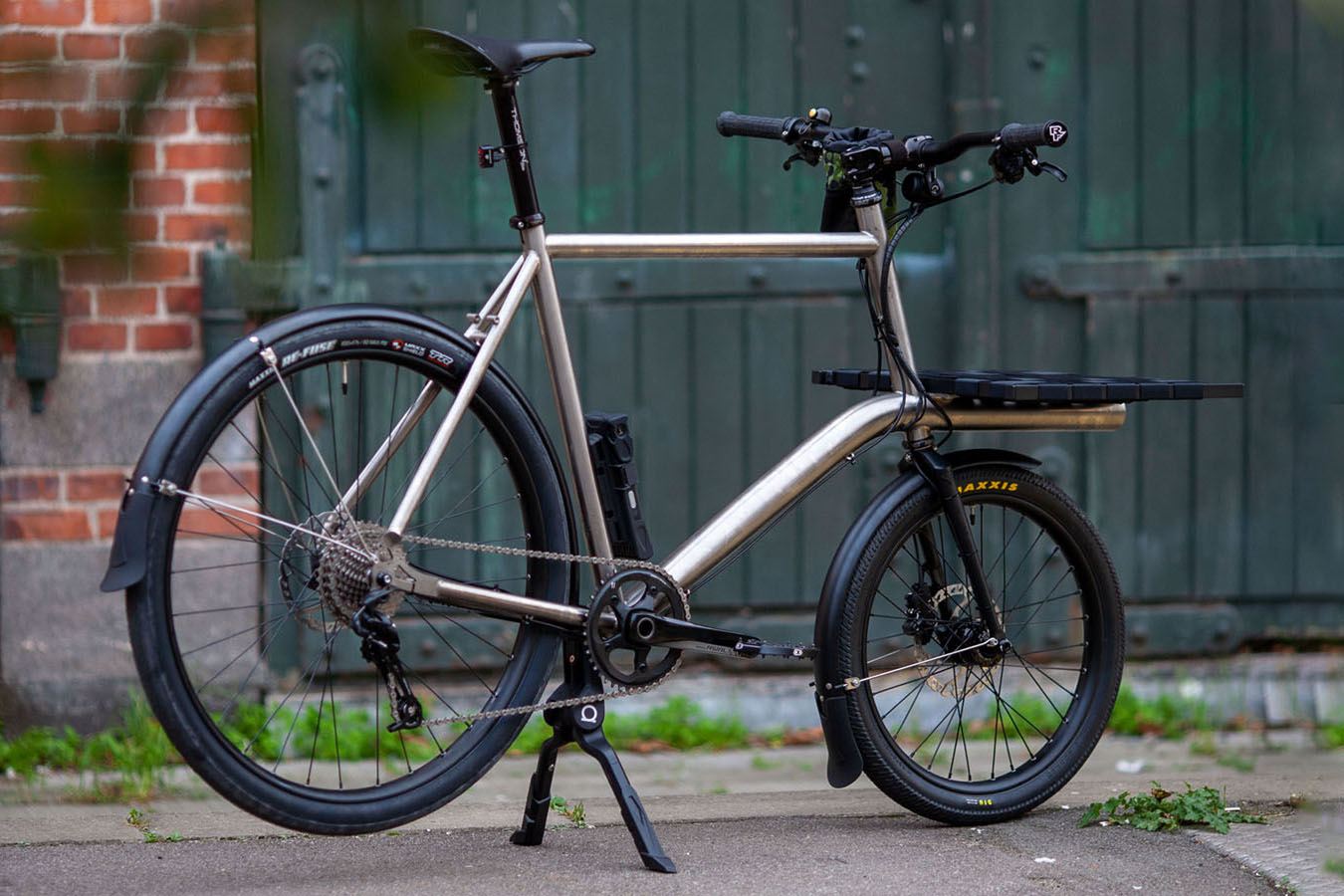
Mini cargo bikes (or Short Johns) are similar to traditional bikes, with smaller flat beds or boxes at the front or rear for loading. While they have less space for carrying your family, they can transport a surprisingly heavy load: Ominum's Mini shown above, for instance, has a maximum load capacity of 150kg (including rider). These bikes are perhaps most suitable for those short on space but who still want the flexibility of transporting heavier items when needed.
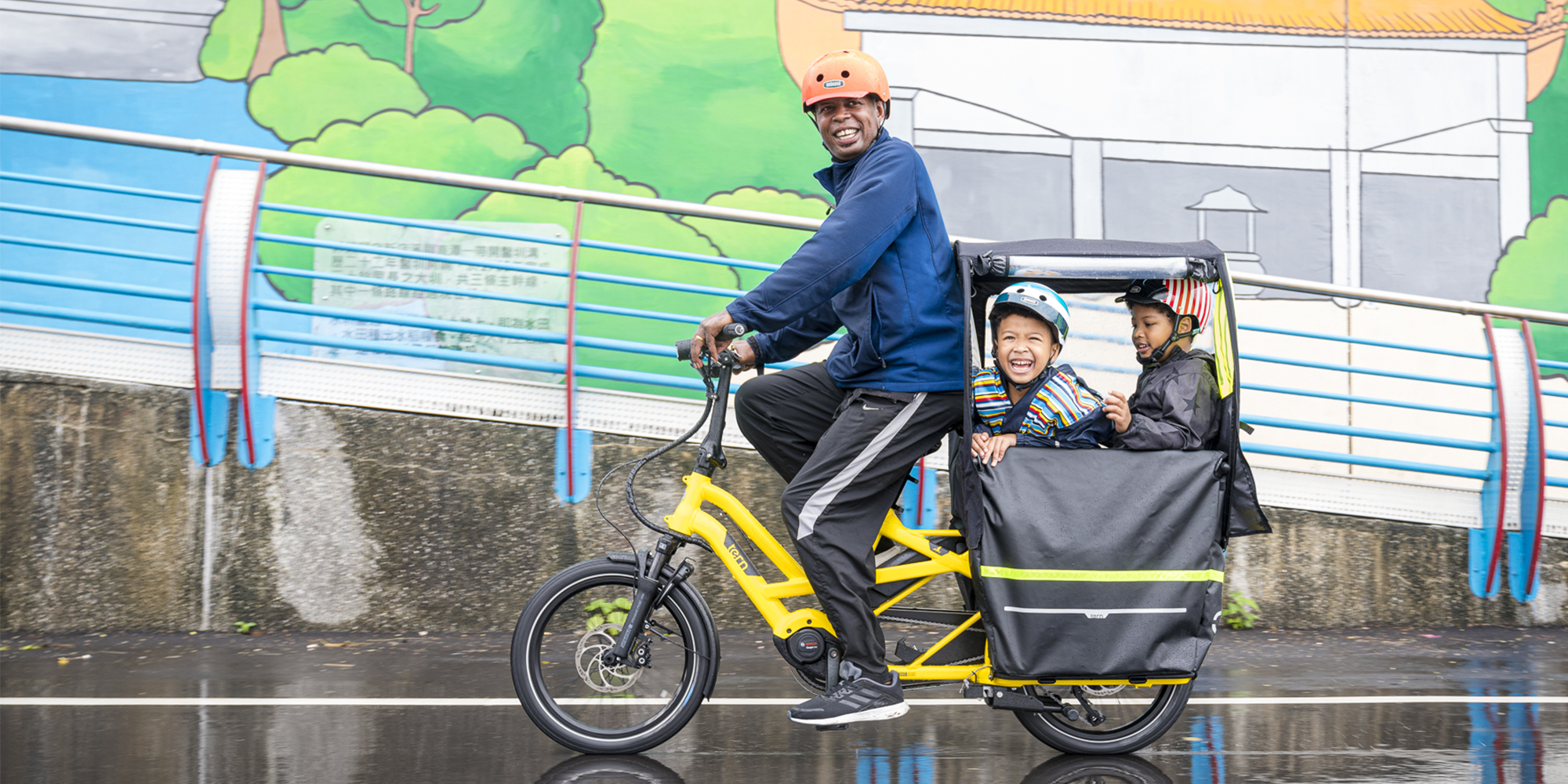
For tricycles, the most recognisable model is likely to be the Christiania, which has had a long history in Netherlands and Denmark and is beginning to build popularity in the UK. While the Christiania has front-loading capacity, rear-loading cargo tricycles are just as common. The main difference between the tricycle, box bike and the long tail is, of course, the addition of the third wheel, which provides a lower centre of gravity and a bit more stability.
Even within these categories of cargo bikes, there is a multitude of configurations to tailor your ride to your needs. Nowadays, it is less a problem of finding the right cargo bike for you, and more a problem of trying to decide which one you would prefer. Likewise, as with traditional bikes, there are plenty of accessories available to fully customise your cargo bike and make it as comfortable as possible. These include rain tents for covering box-bikes, baby seats, additional mudguards, and passenger bars. It’s relatively easy to modify the cargo bike to suit you and your family’s needs.
Are cargo bikes difficult to ride?
In short, no they aren’t, but there are differences to traditional bikes in terms of how they are ridden that impact both manoeuvrability and stability that you might want to consider before trialling a cargo bike.
There are differences between cargo bikes themselves too; a box-bike rides very differently to a long tail, owing to the linkage steering, and its boxy front may make cornering slightly more challenging. A long tail with rear loading rides similarly to a traditional bike loaded up with panniers and may suit an experienced rider, while a tricycle with its third wheel and low centre of gravity may be more stable for a new rider.
You will also notice differences between loaded and unloaded riding, just as you might with a traditional bike racked up with pannier bags. A fully loaded cargo bike, with kids squirming or delivery goods sliding about, is going to feel very different to one without the cargo. With practice, most people pick up riding a cargo bike quickly and easily – but how quickly is likely to be determined by your experience, the cargo you’re transporting and the bike you choose.
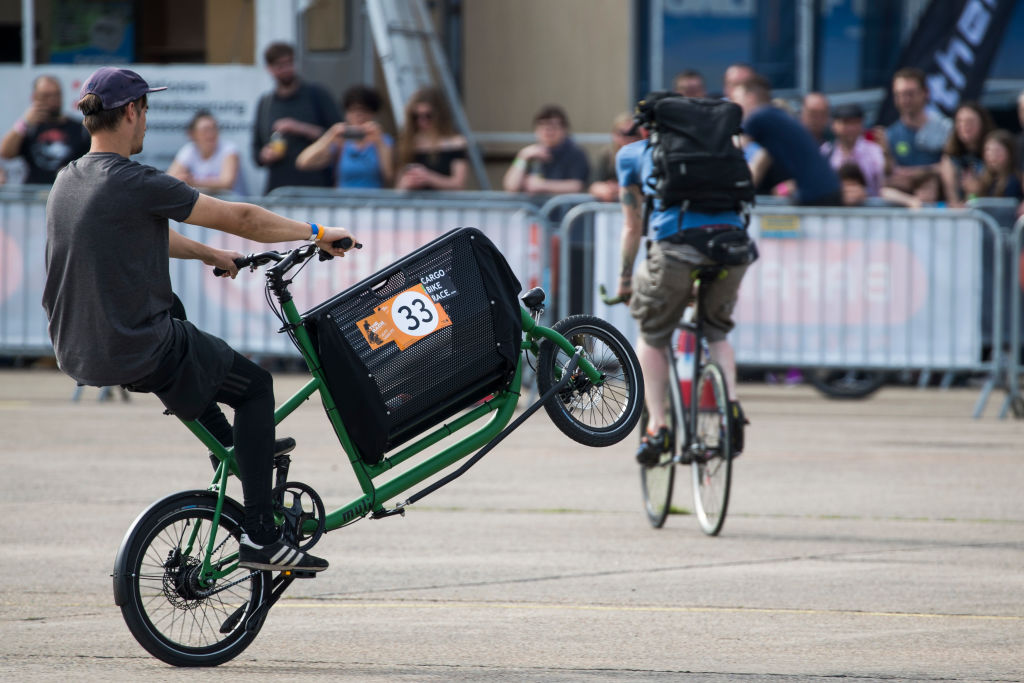
How big are cargo bikes?
Storage for cargo bikes at home is undeniably a concern for those of us considering purchasing one, especially if you’re already short on space. While most cargo bikes will be larger than a traditional bike, the exact dimensions will vary based on your model choice and configuration which, in turn, is likely to be determined by your transportation needs. On average though, a cargo bike might be approximately 2.3 meters in length, and 1 meter in width.
However, while space may be a consideration in your decision to purchase a cargo bike, you’re going to need to consider weight too; cargo bikes are substantially heavier than traditional bikes, even without additional loading. A cargo bike can weigh as much as 80kg, and while electric motors are a helpful feature for managing that load while riding, an electric cargo bike is a lot less helpful when you’re having to lift it up and down steps. You’ll need to think carefully about the routes you’ll ride regularly and consider how a cargo bike might suit your needs.
Are cargo bikes worth the money?
The practicality, versatility and durability of a cargo bike cannot be underestimated, particularly for those living in a city or riding as an urban commuter. Cargo bikes are ideal for families, as children can be carried in a cargo bike safely from as young as three months, and there are very few items you’ll need to transport daily that you can’t get on a cargo bike with a bit of creativity.
Priced anywhere from £500 to £8,000 for a specced-out model, cargo bikes are still largely cheaper than a car, and for the most part, competitive with traditional bikes in terms of price. Even more appealingly, in the UK, cargo bikes are available on the cycle-to-work scheme, with plenty of other financing options available – including from local authorities looking for new sustainable transport solutions – so it is always worth having a look around.
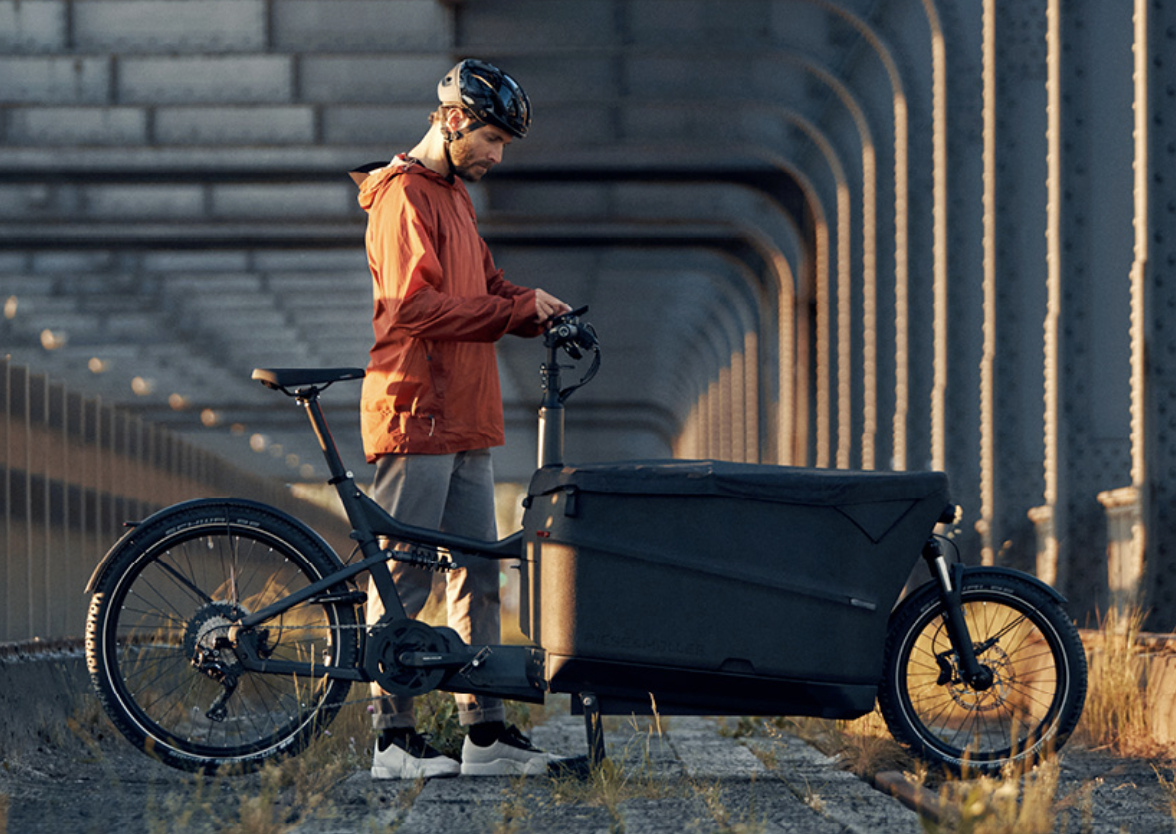
From an environmental perspective, the cargo bike really is a no-brainer: the cargo bike is zero emissions while in use, but even when we consider the embodied emissions (considering all the emissions needed to produce the raw materials and manufacture the bike) it still has a lower carbon footprint than most methods of transportation.
Finally, for those who love riding, a cargo bike unites practicality with the joy of riding, allowing us to integrate cycling even more into our daily lives.